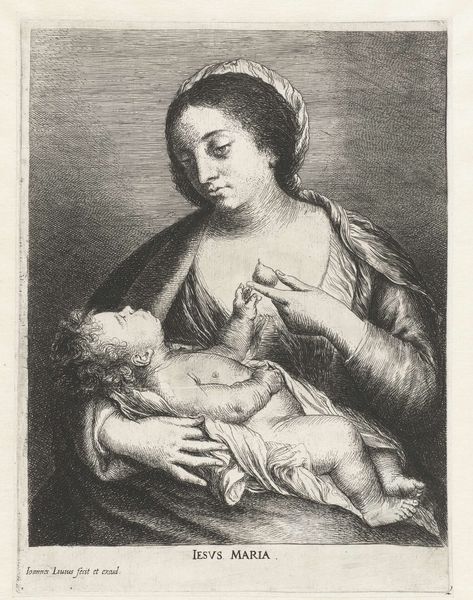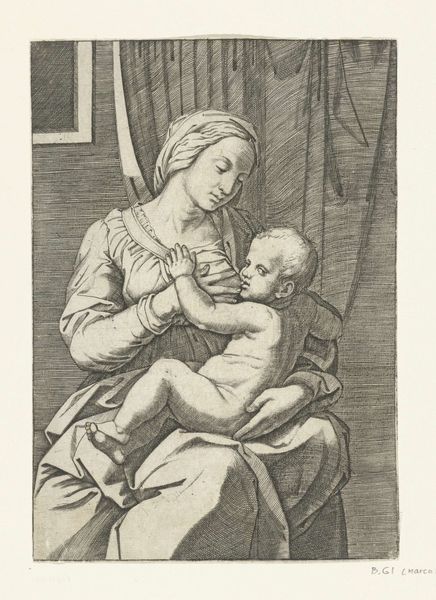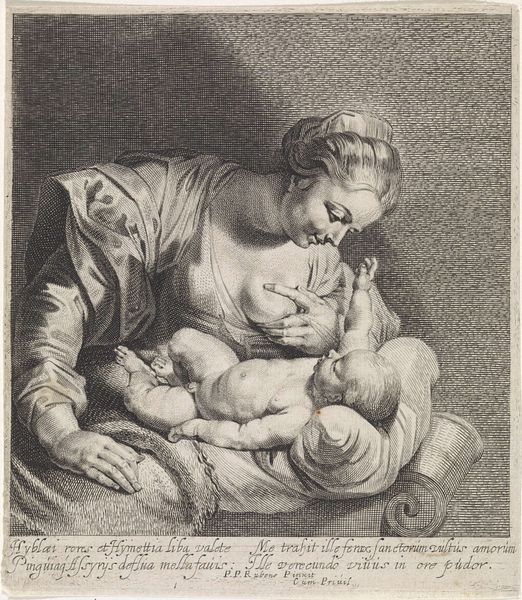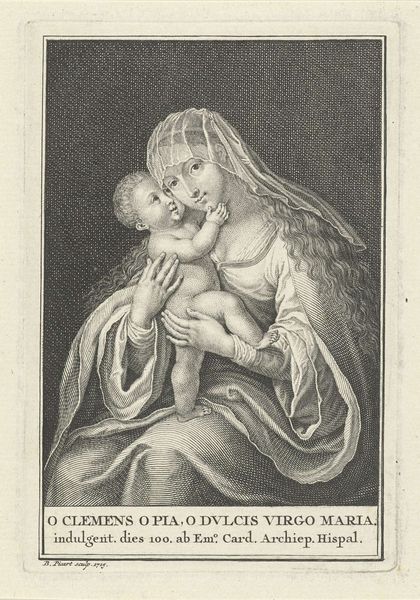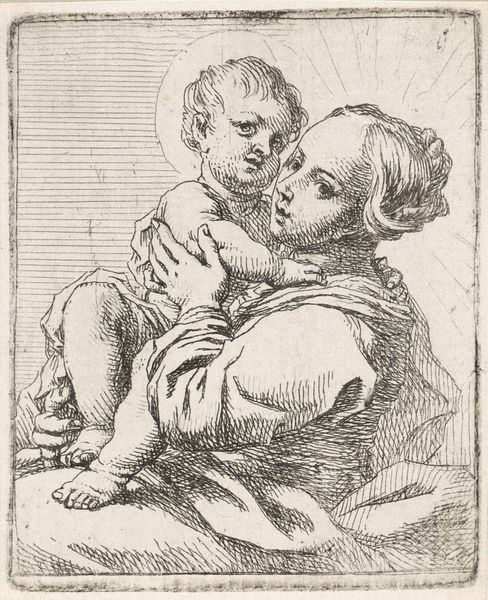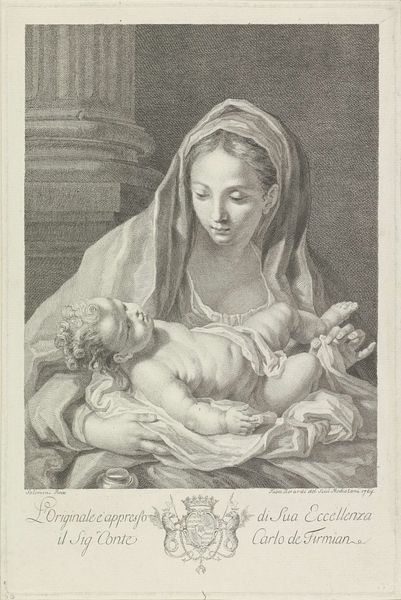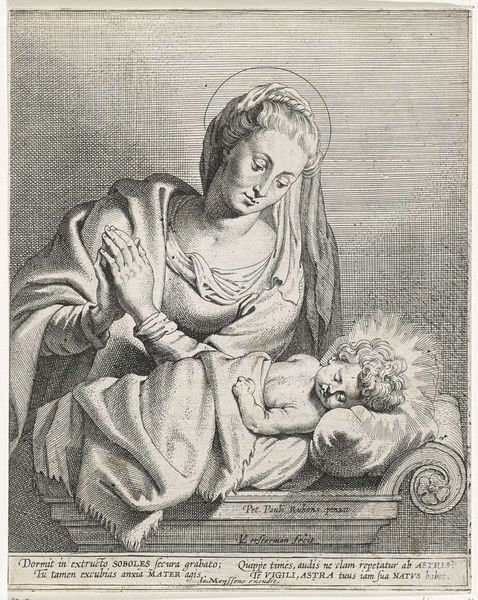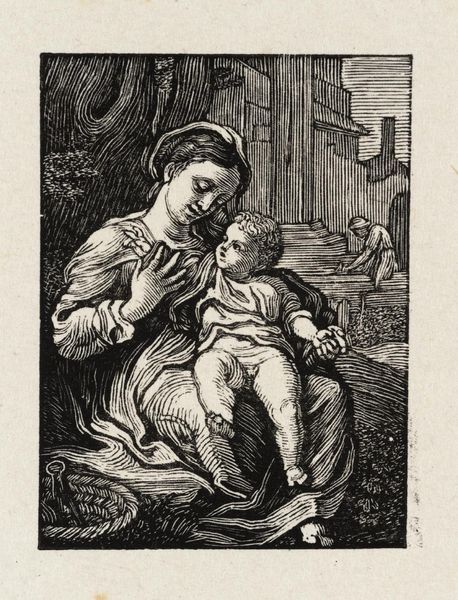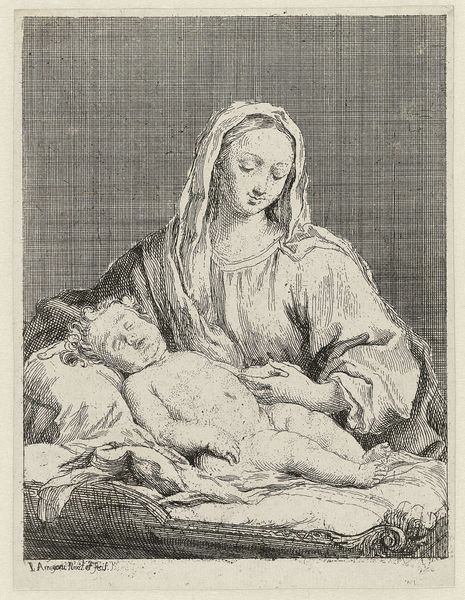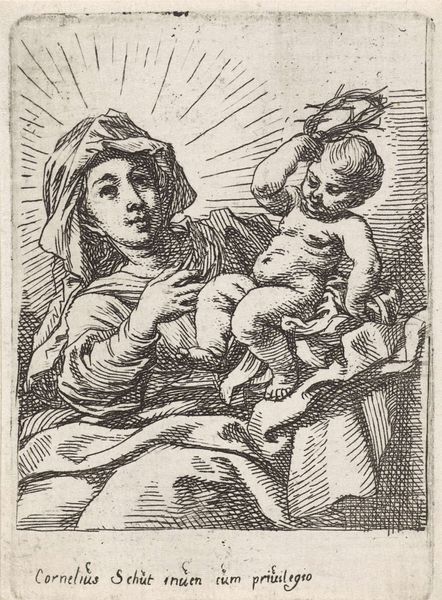
engraving
#
portrait
#
pencil drawn
#
baroque
#
figuration
#
line
#
portrait drawing
#
genre-painting
#
history-painting
#
engraving
Dimensions: height 144 mm, width 112 mm
Copyright: Rijks Museum: Open Domain
Editor: Here we have "Maria met Christuskind aan borst," or "Mary with Christ Child at her Breast," an engraving made sometime between 1710 and 1784, after Peter Paul Rubens, by Frans Pilsen. It feels very intimate, almost voyeuristic in its depiction of motherhood. What are your initial thoughts? Curator: Well, given its production through engraving, a mechanical process, I’m immediately drawn to thinking about its role in circulating imagery of motherhood, particularly of Mary and the Christ Child. Consider the engraver, Pilsen – essentially a craftsman, reproducing Rubens’ vision for wider consumption. Editor: So you see it less as an artistic statement and more as a product of its time? Curator: Precisely. The engraving technique itself becomes a crucial part of the artwork's meaning. Think about the labour involved in creating these lines, mimicking the texture and tonality of a painting. How does that mass production, and potentially mass consumption, influence its sacred subject matter? Editor: I guess it does democratize the image. Before printmaking, owning an image like this would be limited to the wealthy. It shifts the context significantly. Curator: Exactly. Furthermore, examine the stylistic choices. The Baroque love of dramatic light and shadow is translated here, not through oil paint, but through the meticulous carving of lines. This shift changes how the image functions as an object, and subsequently how people would relate to and interact with the artwork and its themes. What do you make of this production approach in relation to its sacred depiction of Virgin Mary? Editor: That’s a really interesting point. I was focused on the intimacy of the scene, but now I see how the very nature of its production complicates that reading. Curator: Material and process are inextricably linked to meaning. And considering the social context, this engraving becomes a vehicle for both artistic expression and widespread ideological dissemination. Editor: I will definitely consider the broader societal context and labor aspects when viewing art from now on. Curator: Indeed, understanding the means of production opens up a whole new way of interpreting visual art.
Comments
No comments
Be the first to comment and join the conversation on the ultimate creative platform.
